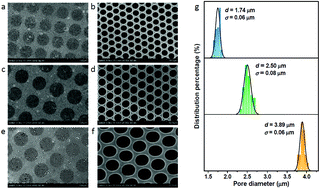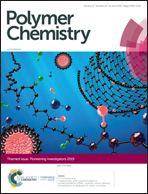Surface modification of self-assembled isoporous polymer membranes for pressure-dependent high-resolution separation†
Abstract
Polymer membranes with narrow pore size distribution have received considerable attention because of their high-resolution and high-efficiency separation performance. By elaborately adjusting the parameters in the membrane formation process, we fabricated self-assembled perforated membranes with a series of pore diameters via the breath figure method. The membranes have very narrow pore size distribution and can be considered isoporous membranes. Membranes with controllable surface chemistry were further achieved by dopamine chemistry. The separation performance of the membranes was systematically investigated under different external pressures. We found that yeast cells can pass through the membranes with a pore diameter smaller than the cell size under a relatively high operating pressure. The isoporous membranes were also applied to the separation of cell mixtures such as yeasts and lactobacilli. A very high flux is obtained under a pressure of as low as 0.004 MPa. Moreover, yeast cells are completely separated from lactobacilli with a rejection ratio of about 100%. The self-assembled isoporous membranes can also be applied in other size-based separation systems with excellent separation performance and reusability, enabling new opportunities in fields such as bio-separation and biosensors.

- This article is part of the themed collection: Pioneering Investigators


 Please wait while we load your content...
Please wait while we load your content...